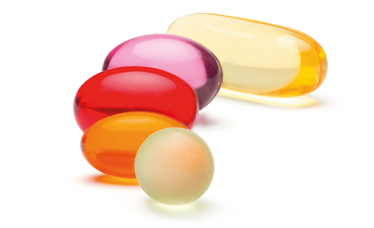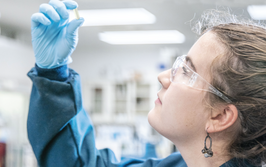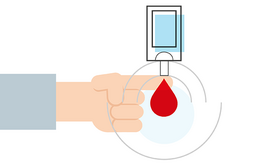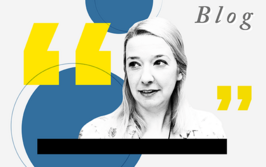Finding Optimal Form
There are many hurdles in drug development, but your chances of success increase significantly if you pay more attention to API optimization from the outset.
sponsored by Catalent

The high costs of bringing a new drug to market are notorious and often dominate discussions about the challenges facing today’s drug developers. With so much attention focusing on financial aspects, it can be easy to overlook more practical development steps. In fact, formulators face many of the key problems at the very early stages of R&D: how do you optimize the molecule’s stability? How do you enhance bioavailability? And how do you select the optimal delivery method? Addressing these issues early – and comprehensively – can lead to less problems down the line, and helps to avoid overly long development times and the associated costs. Long development times, and the selection of the right formulation and delivery platform, have been cited as the top challenges (in addition to cost) for formulators and R&D managers (1).
At the early stage of development, a common problem with the molecule is lack of bioavailability. “70 percent or more of new chemical entities (NCEs) face bioavailability challenges, which often expand beyond solubility and permeability,” explains Julien Meissonnier, Vice President of Science & Technology at Catalent “We are also seeing an increasing number of NCEs that, when developed, are not appropriate for their chosen delivery system. Sometimes these compounds eventually reach the market in a sub-optimal form, but they do not realize their true potential, nor meet the expectations and needs of patients. The right delivery technology can make a huge difference.”
The early development stage is actually a golden opportunity to make the most critical decisions. During this period, formulators build a huge body of knowledge about the molecule, such as an understanding of its stability, affinities, and particle and bulk attributes, which can be used to dictate and optimize the molecule’s future development, final dosage form and manufacturing process. Although there is awareness in the industry that optimization and the use of quality-by-design principles at the early stages of development are directly linked to a product’s future success, the big question for many is, how exactly is this achieved – especially when being asked to make formulation decisions quickly.
Knowledge is power
Today’s scientists are under significant time pressure. Drug candidates must be screened quickly and, in some cases, the complexity of a candidate is not fully understood when decisions are made. For example, a formulation approach may be chosen too rapidly, resulting in a mismatch with the API. Or perhaps formulation scientists expect one delivery technology to be used, while those further along the development chain are expecting (and preparing) for something very different. It makes great sense for everyone in the development chain to have a single target and a similar outcome in mind; collaborating with experts and connecting the dots between competencies are both important in this regard.
There are many high-throughput salt, crystal-form, and co-crystal techniques, as well as prediction and modeling technologies that can help to optimize drug development. “But there is no one-size-fits-all solution to a drug development problem,” says Meissonnier. “At Catalent, our focus is on both applying a structured and science-based methodology, and the best scientific toolkit to accelerate product development. We look at the specific problems that a partner is having with a particular molecule and then assess why these problems are occurring and how they can be solved. We’ve combined all of our knowledge, expertise and a comprehensive scientific toolkit within Catalent to develop a service that matches viable drug delivery technologies to each molecule and screening programs. We describe it as a solution suite for integrated drug development, and it’s called OptiForm. I would say it is the natural evolution of our solutions offering to resolve complex biopharmaceutical limitations.”
The preliminary molecule assessment phase of OptiForm Solution Suite was originally developed by GlaxoSmithKline, which used technologies to support its internal screening programs at the candidate stage. It’s now been used for more than 700 candidates. Catalent integrated the platform into its service offering in 2010 – and has been building and expanding on the service ever since so that it exists as both a set of tools for assessing candidates, and for selecting the right enhancing formulation to progress in preclinical and clinical studies.
According to Meissonnier, identifying the solution is not just about using the right technology – it’s also about the mindset and expertise behind it. It’s difficult, however, to be an expert in every technology. Successful drug development calls on a range of disciplines including analytical science, organic chemistry, physico-chemical properties, materials science, crystal engineering, statistical analysis and biopharmaceutics, all working in concert to reach the optimal, patient driven outcome. Catalent has essentially created networks of experts who understand the correct utilization of each enabling drug-delivery technology.
The path to optimization
The ultimate goal of API optimization is a final drug form and delivery system that makes sense for both the molecule and the patient. Broadly speaking, this optimization process can be divided into three stages. The first stage involves API characterization and salt, crystal-form, and co-crystal screening. Using a solubility limited absorbable dose (SLAD) model in this early stage is also key to building an early formulation screening scenario that will allow you to reach the necessary drug exposure and the ability to escalate the dose.
“We call this the ranking and risk assessment stage – or the ‘Assess’ stage. High-throughput screening tools applied to solid state analysis, combined with modeling techniques, help to identify the most stable solid-state form,” says Meissonnier. The molecule is then ranked according to the Developability Classification System, which as James Butler from GSK notes (2), is an effective way of differentiating drugs based on their developability characteristics, such as their solubility to dose relationship, permeability, and risks such as chemical and physical stability, and processing risks in dose form selection. OptiForm has a variety of automated tools and workflows to support this phase and to assess more accurately the complete dataset earlier and faster.
The second stage ‘Enhance,’ encompasses the parallel screening of formulation approaches. After the first stage, there should be a good understanding of the molecule and any potential risks that may limit drug exposure. Now is the time to look for more specific formulations and solutions, such as considering particle size reduction or other approaches to enhance solubility and bioavailability. Feasibility studies and rapid prototyping should be used to check for effects on drug exposure and the potential for future dose escalation; all selections should be made with these two critical factors in mind. Evaluating all the available technologies requires experts in each area who can assess the benefits.
The final stage is ‘Deliver’, which comes after the 12 week screening program. It is at this point that the molecule’s true value – and the value of early optimization – will begin to materialize by providing animal PK study materials, a risk ranking of formulation approaches, and a recommended path to first-in-man studies to reach exposure and successful dose escalation.
The recommendations go beyond Phase I. “After the first human study, you will have even greater knowledge of the drug and its potential therapeutic effect. Now you need the complimentary enhancing technology that will optimize the final profile of the drug and help resolve issues such as variability, modulating the release profile to match the therapeutic index, and maintaining exposure without affecting the release profile or product viability,” says Meissonnier.
Connecting the dots
High-throughout screening technologies and services have seen tremendous uptake by the industry, but, according to Meissonnier, the real value does not simply lie in identifying promising assets early on, but in being able to connect the asset with an appropriate form of development – and using the knowledge as a science-driven decision tree for the product’s entire development. After all, the knowledge generated in early development can also benefit manufacturing later on; it’s no use finding the right formulation only to realize that it cannot be commercially scaled.
“We were confident about bringing our service offering to the market and our customers because we were convinced that it was a real industry need. We’re proud that our customers have embraced it – to the point that some consider Catalent as an extension of their own R&D lab,” says Meissonnier. “It’s gratifying to be able to provide something so valuable. Making a difference is what makes us scientists get up in the mornings with a desire to work on the most complex projects.”
- The 3rd annual drug delivery landscape survey was sponsored by Catalent Applied Drug Delivery Institute. For more information, visit www.drugdeliveryinstitute.com
- J.M. Butler and J.B. Dressman, “The Developability Classification System: Application of Biopharmaceutics Concepts to Formulation Development,” J. of Pharm. Science, 99(12), 4940-4954 (2010).


















